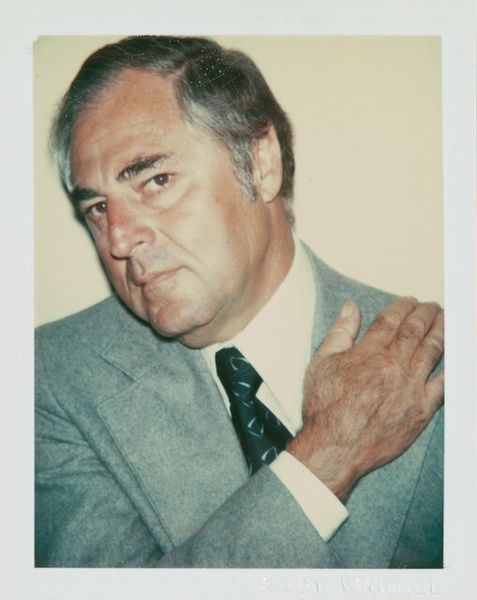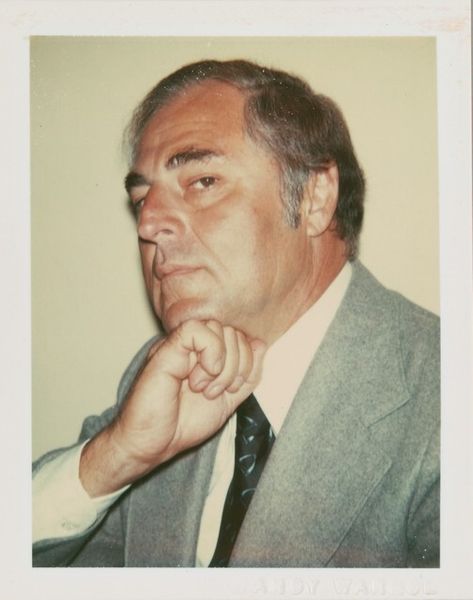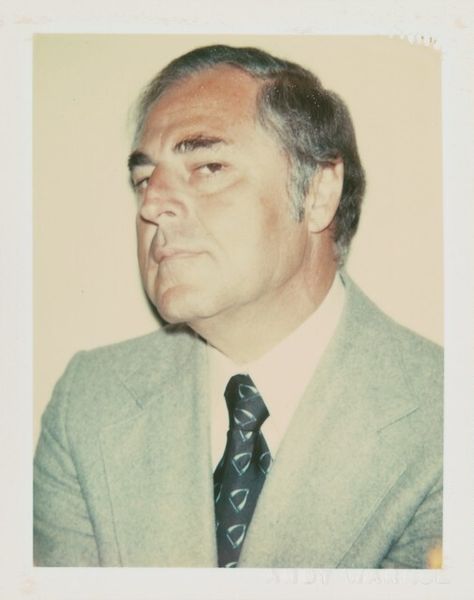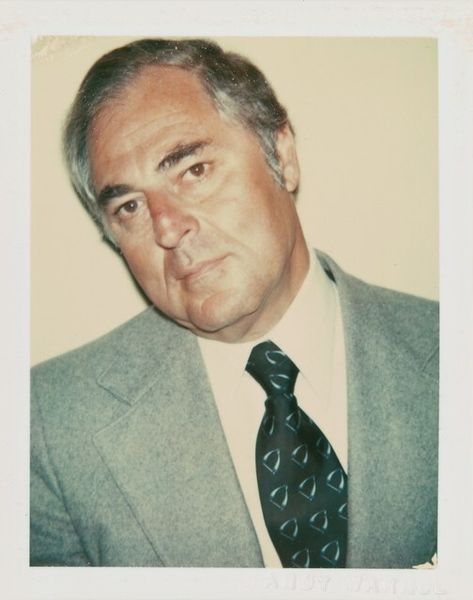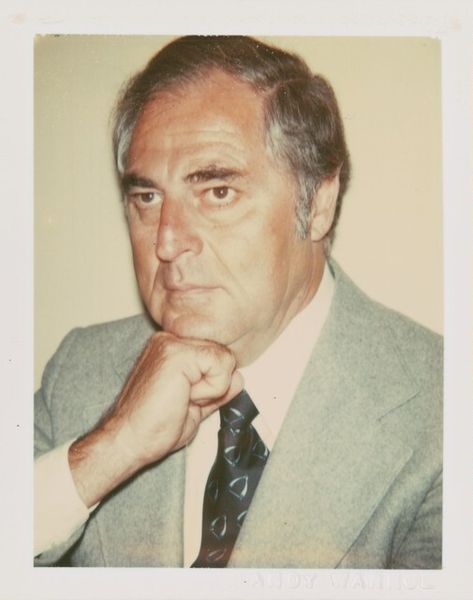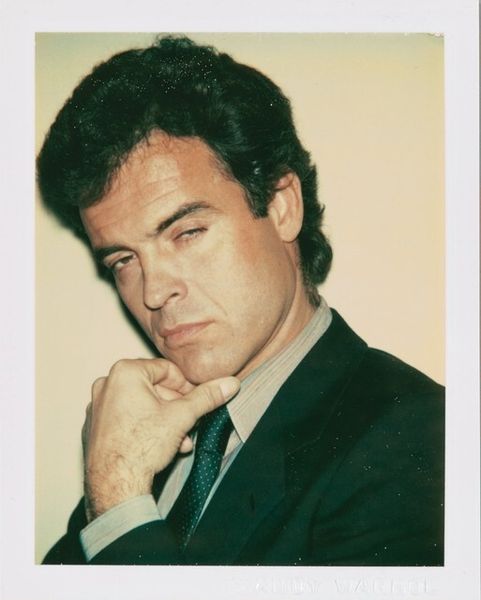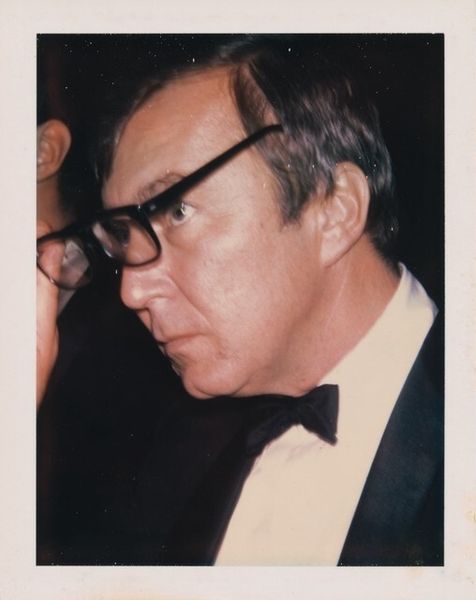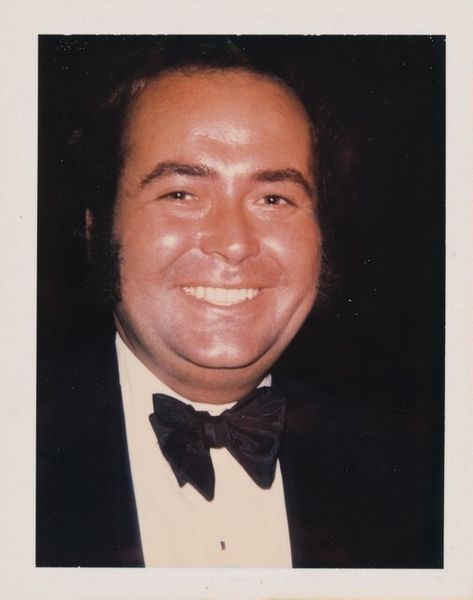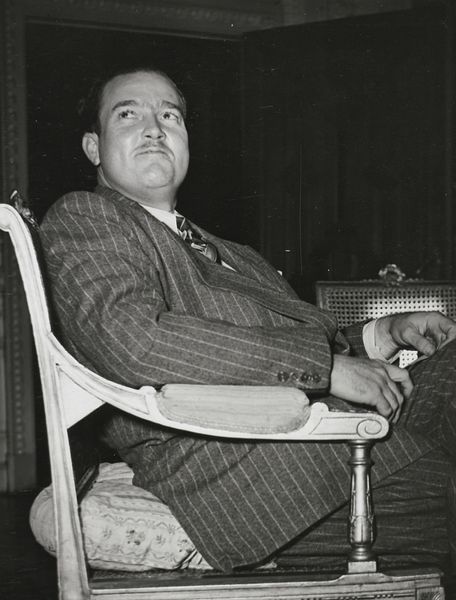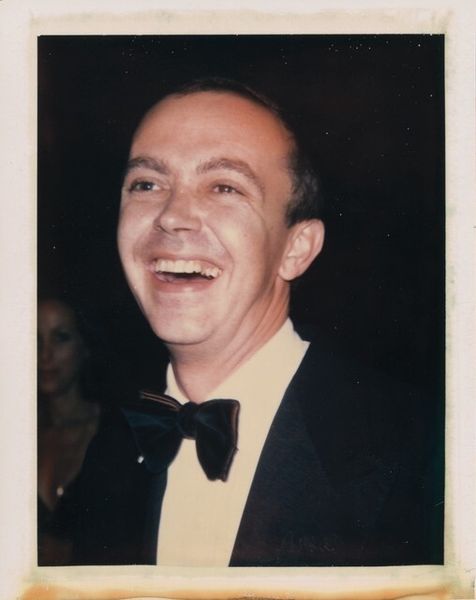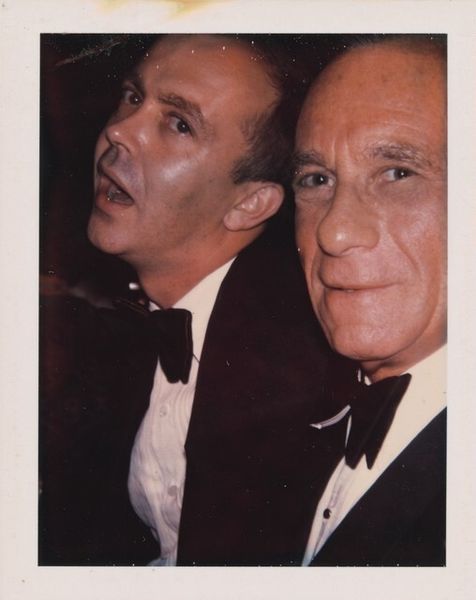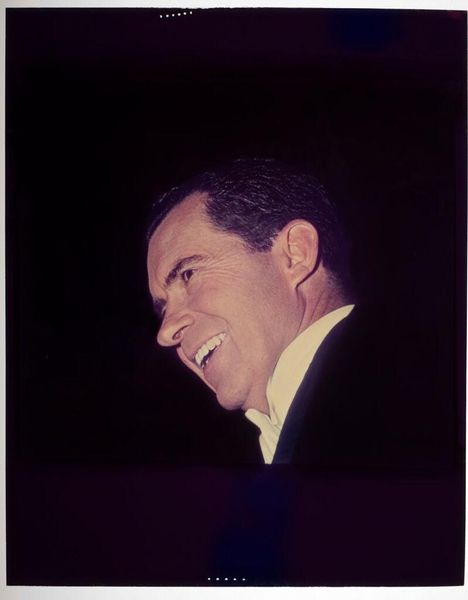
Dimensions: image: 9.5 × 7.3 cm (3 3/4 × 2 7/8 in.) sheet: 10.8 × 8.6 cm (4 1/4 × 3 3/8 in.)
Copyright: National Gallery of Art: CC0 1.0
Editor: Here we have Andy Warhol's "Miles Fiterman," a polaroid from 1975. It strikes me as a very straightforward portrait, almost a little...stiff? What’s your read on this piece? Curator: Well, it's a Polaroid, so that inherent immediacy changes the game. It’s not the same as a formally posed painted portrait. We have to remember Warhol's fascination with celebrity and how he democratized portraiture, turning it into something more accessible through mediums like Polaroids and screen prints. Fiterman, while not a global household name, was clearly someone of local importance – worthy of Warhol's attention. This piece becomes an artifact documenting a specific intersection of art, commerce, and social standing in 1970s New York. Why do you think Warhol chose the Polaroid format specifically for this type of commission? Editor: I guess because it felt more instant and maybe less precious than painting? Like he could crank them out faster and give the sitter a sense of… participation? Curator: Exactly. Consider also the socio-economic implications: owning a Warhol portrait, even a Polaroid, signaled a certain level of cultural capital. These images contributed to a celebrity-obsessed culture. Think about who gets memorialized through portraiture and why. Whose images are circulated, whose stories are told? Editor: That makes a lot of sense. It's about Warhol making portraiture more accessible but still exclusive, defining who mattered at that time. So, not just a snapshot, but a carefully considered social statement? Curator: Precisely! And a shrewd business decision. Each Polaroid was also a study for his larger, more elaborate commissions. By acknowledging its position in that artistic and financial process, this relatively simple Polaroid says a great deal about the art world and New York society. Editor: I never thought about the relationship between this quick Polaroid and his other works. I see now how it speaks to much broader social and art historical trends. Thanks!
Comments
No comments
Be the first to comment and join the conversation on the ultimate creative platform.
